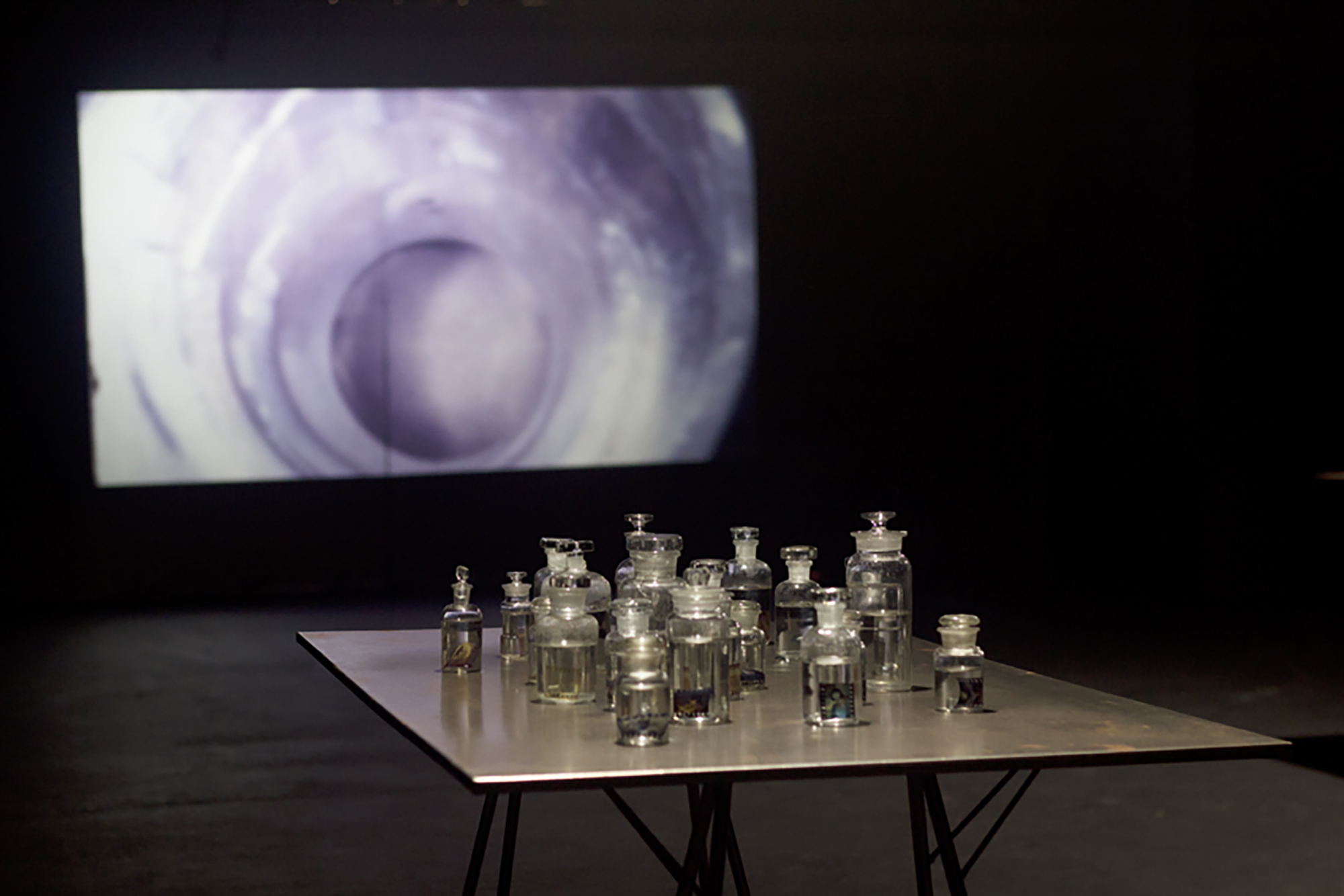Reazione Nera
2018Centro Cultural San Martin






Archivo MDC/PZF Camilo Golgi pudo distinguir, a principios del siglo XX, una tintura negra que permitía identificar las neuronas y su interacción, la Reazione nera. Carolina Magnin retoma el título del experimento para colocar una selección de diapositivas de archivos familiares, científicos y de museos arqueológicos en frascos de laboratorio bio-químico, donde ahora flotan en líquido fijador, el mismo que marcó el comienzo de la fotografía cuando se empezó a emplear en el cuarto oscuro para que la imagen pudiera perdurar en el tiempo.
En este caso, las diapositivas, reveladas hace años, vueltas a exponer a la acción del fijador, acumulan partículas salinas que se adhieren a su superficie y, poco a poco, la destruyen. El trabajo de Magnin observa la persistencia de las imágenes-no la conservación-, su forma de resistir ante lo incontrolable: inmersiones excesivas, lluvias, exposiciones demasiado prolongadas a luces, líquidos, vientos.
Reazione nera reúne lo que, en la imaginación, sería el laboratorio científico y el fotográfico. La experimentación controlada choca con el desborde de la fantasía, la tintura negra se expande desde las neuronas hacia las paredes. El recorrido atraviesa transparencias y proyecciones, huellas de un pasado que, siendo inalterable, se modifica ante el paso del tiempo. Mientras tanto, el experimento de Magnin insiste en retornar sobre las mismas imágenes como dando vueltas alrededor de un solo centro, en forma de ronda o de espiral, sin volver jamás sobre las mismas pisadas.
Gabriela Schevach
Archivo MDC/PZF Camilo Golgi was able to distinguish, at the beginning of the 20th century, a black tincture that made it possible to identify neurons and their interaction, the Reazione nera. Carolina Magnin takes up the title of the experiment to place a selection of slides from family archives, scientists and archaeological museums in bio-chemical laboratory jars, where they now float in fixed liquid, the same that marked the beginning of photography when it began to be used in the darkroom so that the image could last over time.
In this case, the slides, developed years ago, again exposed to the action of the fixator, accumulate saline particles that adhere to its surface and, little by little, destroy it. Magnin's work observes the persistence of the images -not conservation-, their way of resisting the uncontrollable: excessive immersions, rains, too prolonged exposure to lights, liquids, winds.
Reazione nera brings together what, in the imagination, would be the scientific and photographic laboratory. Controlled experimentation collides with the overflow of fantasy, black tincture expands from neurons to walls. The route crosses transparencies and projections, traces of a past that, while unalterable, changes with the passage of time. Meanwhile, Magnin's experiment insists on returning to the same images as if circling around a single centre, in the form of a round or spiral, without ever returning to the same footsteps.
Gabriela Schevach